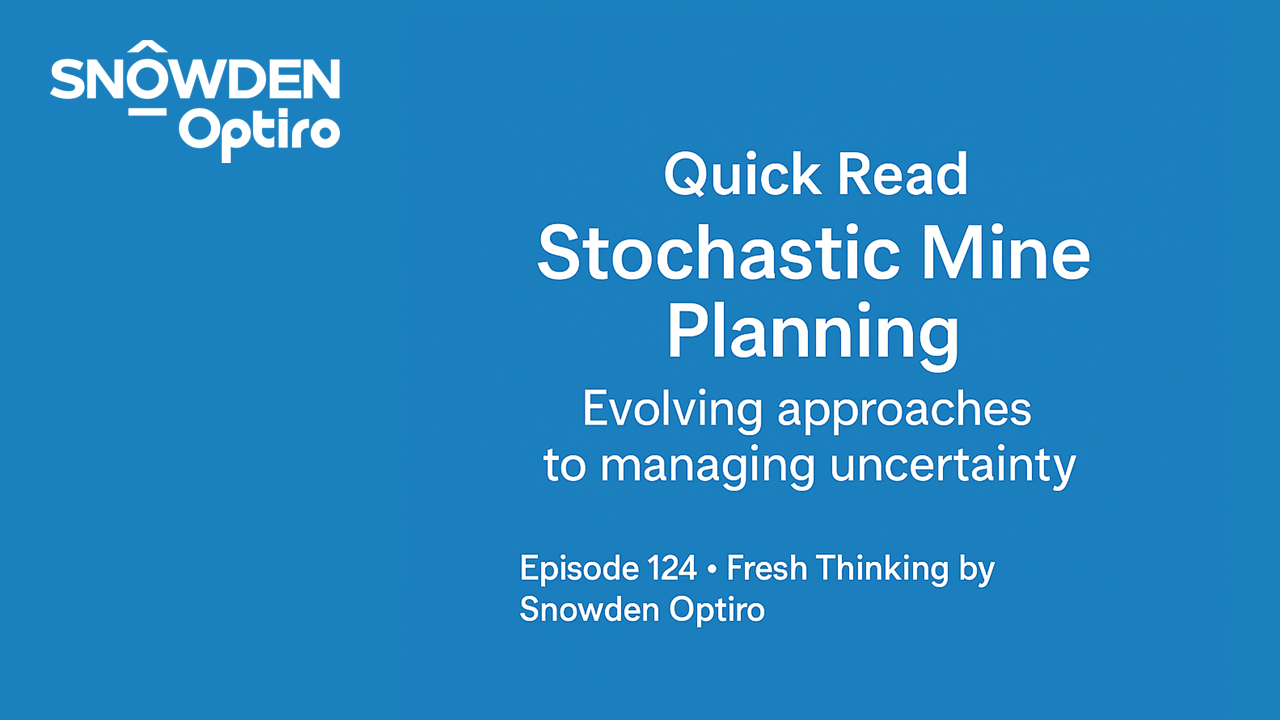


Here’s your 3-minute quick read of Fresh Thinking by Snowden Optiro’s podcast Episode 104.
We’ve pulled out the key insights and takeaways—perfect for when you want the value, minus the headphones.
3-minute read – for busy mining professionals
In this episode of the Fresh Thinking podcast, Snowden Optiro’s Pedro Ladeira sat down with Hamish Guthrie, Managing Consultant Mining Engineering, to discuss one of the most fundamental—but often misunderstood—elements in mine planning: cut-off grade.
At its core, the cut-off grade defines the point where the revenue from mined material outweighs the cost of extracting and processing it into a saleable product. It’s not just a number—it’s a strategic lever used throughout the mine life cycle.
Whether you’re designing a pit shell, scheduling production, or deciding what gets processed each day, cut-off grades drive key economic decisions.
“They’re used to assess economic mining inventory and for daily decisions on what material goes to the plant,” Hamish explains.
Cut-off grades are applied differently depending on the mining method.
When assessing a cut-off grade, mining professionals must consider the full value chain:
All of these influence where the line is drawn between ore and waste.
Not at all. In fact, they’re dynamic and should be reviewed regularly. Projects often start with higher cut-off grades to maximise early margins and defer lower-grade material for later. Over time, as conditions change—think commodity prices, operational costs, or even processing technology—cut-off strategies are adapted to meet evolving goals.
“Most mines review cut-off grades annually,” says Hamish. “Changing them can improve early cash flows and extend mine life.”
The cut-off grade is more than just a threshold—it’s a powerful tool that shapes both strategic and operational planning. Getting it right means better decisions, more value, and a stronger project outcome.
CONTACT
If you would like to contact either Hamish or Pedro: contact@snowdenoptiro.com
Missed the episode? Catch the full conversation here: Watch on YouTube from the Snowden Optiro team.
Here is a LINK to our Snowden Optiro YouTube channel.


Subscribe here for our podcasts, technical articles and news
